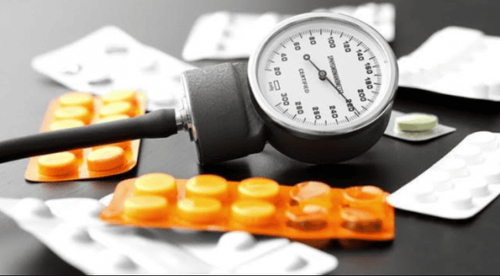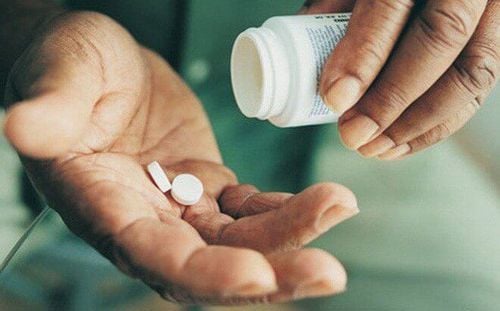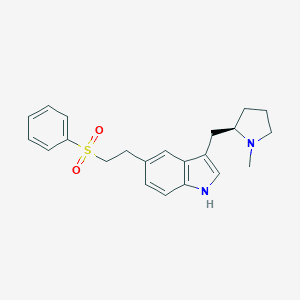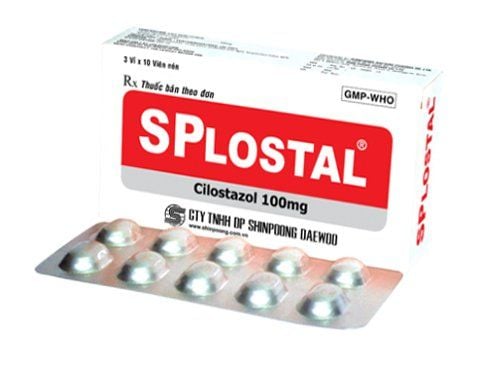This is an automatically translated article.
Management of hypertension in acute stroke is related to the classification of brain injury as hemorrhagic or ischemic. Accordingly, blood pressure control should be tailored to the pathophysiology, individual patient, and there is no single formula that fits all cases. Therefore, a correct diagnosis is important based on clinical features, brain imaging, neurovascular assessment, and general cardiovascular testing.
1. Management of hypertension in ischemic stroke
Acute ischemic stroke occurs due to occlusion of an intracranial or carotid artery with consequent lack of blood and oxygen to the brain area. A few minutes after cerebral artery occlusion, the core ischemic lesion forms. However, a larger area at risk of hypoperfusion may be salvageable if prompt revascularization therapies are performed. The salvageable or ischemic areas are largely dependent on accessory blood flow. Accordingly, an acute drop in blood pressure may threaten perfusion in these critical regions.
MORE: Dangers of hypertensive stroke: Rupture, rupture of cerebral blood vessels
In the acute phase of an ischemic stroke, early initiation or continuation of antihypertensive therapy is indicated only determined in patients treated with a recombinant tissue plasminogen activator or if hypertension is excessive. For patients eligible for IV thrombolysis, antihypertensive therapy should be such that systolic blood pressure is ≤185 mmHg and diastolic blood pressure is ≤110 mmHg prior to treatment and <180/ 105 mmHg for the first 24 hours after treatment. A recently published clinical trial evaluating more stringent blood pressure goals after the indications for intravenous thrombolysis for acute ischemic stroke did not show a long-term benefit in terms of outcomes. independent or survived, however lower blood pressure levels are associated with lower rates of hemorrhagic conversion.
The benefit of acute lowering of blood pressure in patients with acute ischemic stroke without thrombolysis is uncertain. In clinical practice, treatment should be initiated in these patients only if the systolic blood pressure is > 220 mmHg or the diastolic blood pressure is > 120 mmHg, or if the patient has a clear indication otherwise.
In addition, rapid reductions in blood pressure, even to the lower end of the hypertensive range, may result in adverse outcomes. Therefore, if indicated, patients should lower blood pressure cautiously, approximately 15% during the first 24 hours after a stroke event.
MORE: Stroke risk in hypertensive patients
Patients with acute ischemic stroke and blood pressure lower than 180/105 mmHg in the first 72 hours after stroke are unlikely to benefit benefit from reintroduction of antihypertensive drugs. For patients who are stable but still have hypertension (≥140/90 mmHg) more than three days after an acute ischemic stroke, initiation or re-initiation of antihypertensive agents should be considered. Restarting blood pressure control is reasonable after the first 24 hours for patients with a history of stable hypertension.

Huyết áp cao là một yếu tố quyết định mạnh mẽ đến nguy cơ đột quỵ
2. Management of hypertension in hemorrhagic stroke
Spontaneous, non-traumatic intracerebral hemorrhage is the second most common cause of stroke after ischemic stroke. The most common causes are hypertension, amyloid vascular disease, drug abuse, and vascular malformations. Meanwhile, subarachnoid hemorrhage is another subtype of hemorrhagic stroke. The two main causes of subarachnoid hemorrhage are rupture of an aneurysm located at the base of the brain and bleeding from a vascular malformation located near the surface of the brain.
In patients with intracerebral hemorrhage, blood pressure is often elevated, and hypertension is associated with a rapid increase in hematoma size, neurological impairment, and a worse prognosis. However, the management of hypertension is complicated by the risk of decreased cerebral perfusion pressure in patients with intracranial hypotension and the potential benefit of reduced further bleeding.
Accordingly, the need for aggressive lowering of blood pressure (<140 mmHg) in patients with intracerebral hemorrhage has no clear clinical benefit but is safe and is associated with better functional recovery in these patients. stroke survivors. However, more aggressive lowering of blood pressure (<120 mmHg) has not only shown no clinical benefit and is associated with a greater increase in adverse events. Therefore, American Heart Association guidelines recommend that for patients with intracerebral hemorrhage with systolic blood pressure of 150–220 mmHg and with no contraindication to acute blood pressure therapy, lowering A systolic blood pressure down to 140 mmHg is safe and possibly effective for improving neurological outcome outcomes.
In parallel, intracranial pressure is another important parameter to be considered in patients with intracerebral hemorrhage. If systolic blood pressure is higher than 180 mmHg and there is evidence or suspicion of increased intracranial pressure, cerebral perfusion pressure should be kept at 61–80 mmHg. If there is no evidence or suspicion of increased intracranial pressure, a moderate reduction in blood pressure (160/90 mmHg). If systolic blood pressure is 150–200 mmHg, acute lowering of blood pressure to 140 mmHg is safe. Drugs that can cause prolonged hypotension or have a rapid lowering effect should be avoided.

Nên tránh những loại thuốc có thể gây tụt huyết áp kéo dài hoặc có tác dụng hạ áp nhanh
The management of blood pressure in the acute phase of subarachnoid stroke is based on rather limited clinical evidence. Observational studies suggest that aggressive treatment of blood pressure may reduce the risk of aneurysm rebleeding but increase the risk of secondary ischemia. Guidelines from clinical associations agree that blood pressure treatment is reasonable if aneurysms are not warranted. Specifically, the treatment goal is to lower systolic blood pressure to < 140 mmHg within 6 hours of stroke onset.
In summary, high blood pressure is a strong determinant of ischemic stroke and intracranial hemorrhage risk. However, in the acute setting of hypertension and stroke, considerations for indications, modalities, and goals of blood pressure control are case-specific. Nevertheless, in any stroke setting, blood pressure control is always at the core of secondary prevention.
High blood pressure is a dangerous disease, but often there are no obvious symptoms. Therefore, patients are often discovered when the disease has complications, the most dangerous is a cerebrovascular accident and leaves no mild sequelae. Therefore, early examination and identification of hypertension is very important, especially those with a history of disease.
Periodic health checkup is one of the ways of early recognition and prevention of disease, especially for patients with a history of stroke, from which a treatment plan can achieve optimal results. Currently, Vinmec International General Hospital has general health checkup packages suitable for each age, gender and individual needs of customers with a reasonable price policy, including:
Health checkup package diamond general health checkup package Vip general health checkup special health checkup package Comprehensive general health checkup package standard general health checkup The patient's examination results will be returned to your home. After receiving the results of the general health examination, if you detect diseases that require intensive examination and treatment, you can use services from other specialties right at the Hospital with quality treatment and services. outstanding customer service.
Please dial HOTLINE for more information or register for an appointment HERE. Download MyVinmec app to make appointments faster and to manage your bookings easily.
References: ncbi.nlm.nih.gov













